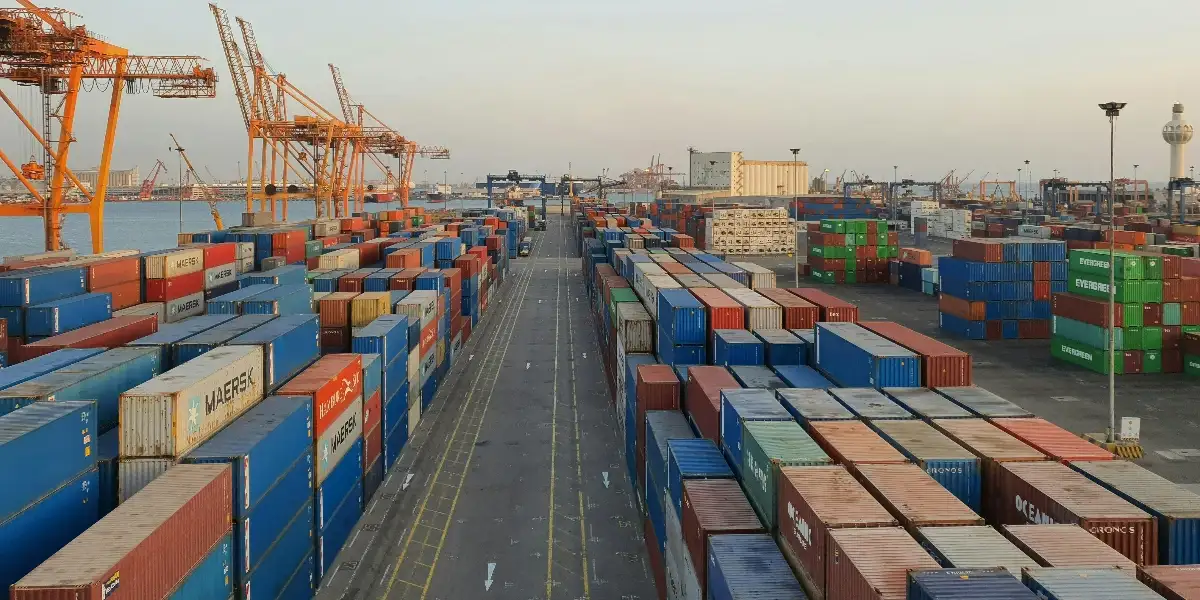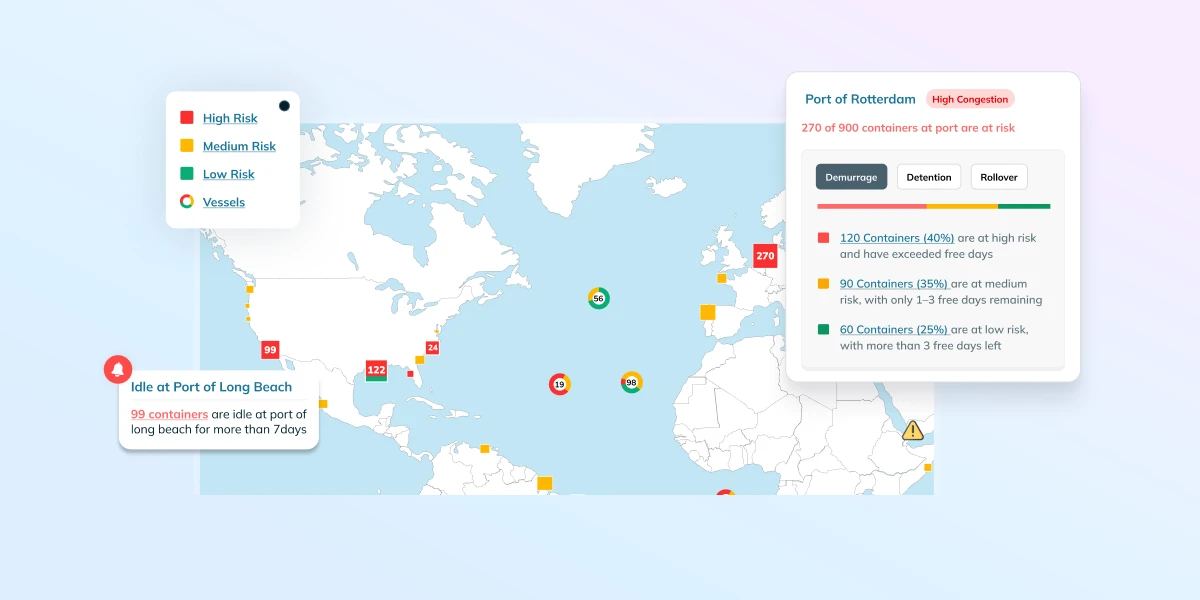Pop-up container yards have now emerged as a solution to the growing port congestion problem. Below we review how Port of Savannah’s implementation of pop-up yards helped to ease the congestion and thus reduce incidents of shipment delays.
Congestion spilling over from the West to the East Coast
With congestion building up at the ports of Los Angeles and Long Beach, more shippers turned their attention to the East Coast.
- Imports volume on the East Coast rose by 13% in Dec 2021.
- Ports of New York, New Jersey and Savannah handled a record number of TEUs in Q4 of 2021.
- This led to a build-up of congestion levels throughout the East Coast.
In response, Port authorities have taken measures to keep up with the newly added capacity. Below we review how those measures led to congestion levels easing throughout the East Coast ports.
Pop-up container yards are used to increase container throughput at the Port of Savannah
To alleviate some of the congestion, the Port of Savannah in Georgia has established Pop-up container yards.
In November 2021, Georgia Ports Authority (GPA) converted existing inland facilities into five pop-up container yards in both Georgia and North Carolina, with the capacity to handle more than 500,000 containers over the course of a year. Similarly, temporary “pop-up” yards were established near manufacturing and distribution centres around the state by large retailers and the GPA in the last few months. Each private spillover yard can accommodate 2,000 to 3,000 containers.
This increase in the overall port capacity can help to improve container/vessel turnaround time at ports.

Higher throughput can help to reduce incidents of the delay
With this additional capacity at hand, we can observe the congestion levels starting to decline.
Our latest data from the Portcast Port Tracker indicates a sharp decline in median vessel waiting time (which is one of the indicators to contextualize levels of port congestion at a given port) following the USSAV kick-off for testing pop-up yards. The median vessel waiting time has dropped from 188 hours in the first week of November to 48 hours in the first week of January, and has further declined since then. This is despite the fact, that the number of vessels at the anchorage has consistently stayed above 20 through the same time period.
However, we are yet to see how the additional capacity that will be added throughout the years and port automation can drive the congestion levels even further.

Would other port authorities and (perhaps) shippers follow?
This could lead to an interesting longer-term trend towards more investments coming in to support port infrastructure & capacity.
- Due to projected year-over-year container volume growth, the GPA decided to expedite more than $538 million in capacity expansion projects. These major investments will help increase the annual capacity of the Port of Savannah from 6 million TEUs to 9.5 million TEUs by 2025.
- Following GPA’s example, other port authorities and retailers across the US have also started to invest in pop-up container yard infrastructure.
- Walmart has converted empty space near the ports of Los Angeles and Long Beach into a pop-up container yard.
This raises a question: would other port authorities or shippers attempt to replicate this approach locally?






